RHYS LEE “PAINT KNOWS…”
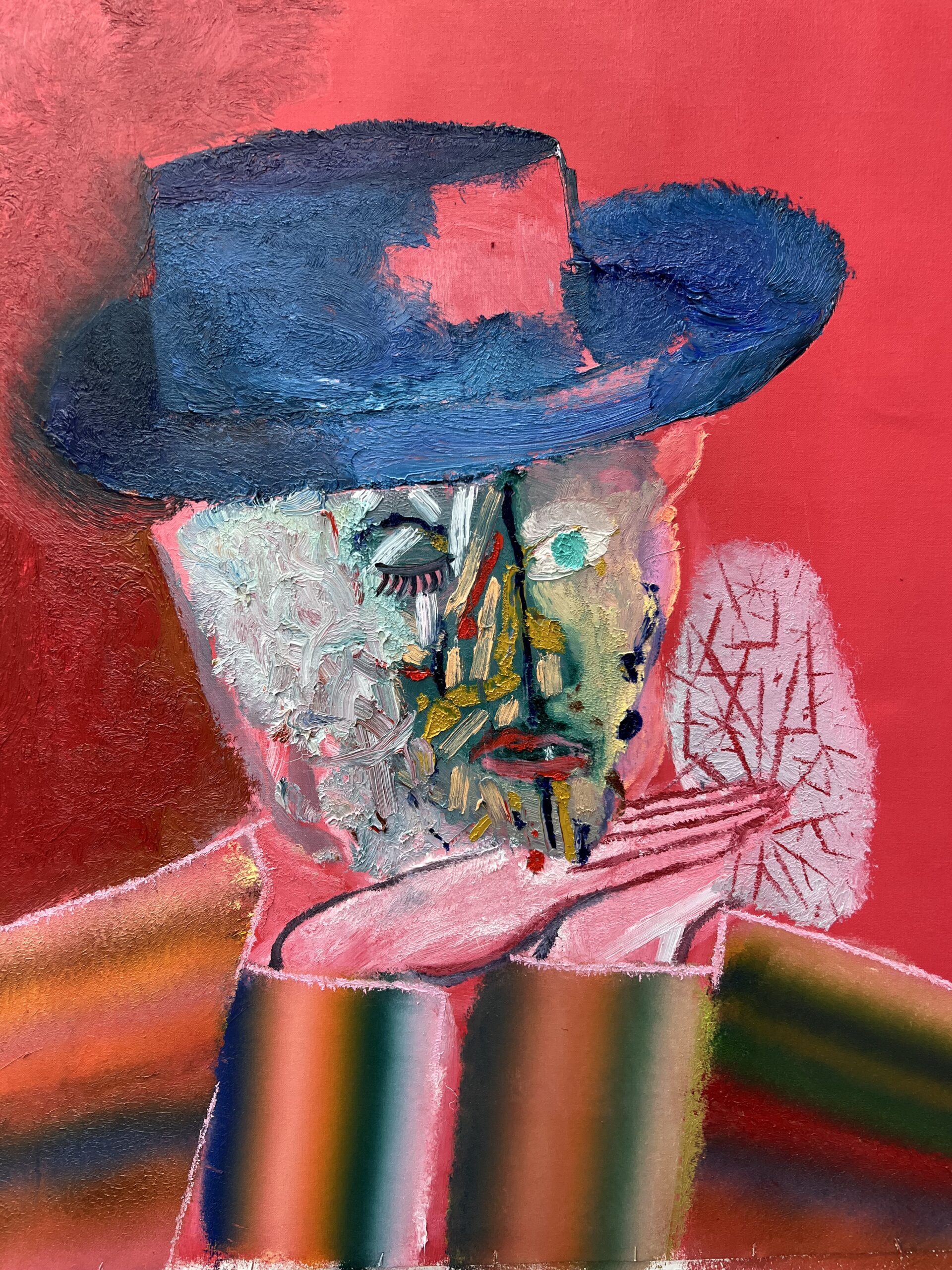
Rhys Lee is a visual artist living and working in Aireys Inlet, Victoria, known for melding ethereal forms with a playful touch of street art—fusing representation and abstraction—through lively oil and acrylic colour palettes. In the wake of several upcoming intercontinental exhibitions—showing in galleries across Athens, London, Melbourne and Brussels—Saša Bogojev caught up with Lee to discuss their street art origins, tackling new mediums, practicing self-honesty, and the necessity of the “artist’s ego”.
SAŠA BOGOJEV How did your journey toward becoming an artist unfold?
RHYS LEE It was something I’ve always done as far as I can remember. Drawing has always been very important, something I did every day as a kid. It developed into caricatures of politicians and teachers at school. I used to get these American horror film fan magazines, called Fangoria; it had old-school special ; effects, latex masks, and crazy blood and gore. So, I used to draw a lot of the masks and the horror heads [laughs]. Pretty exciting stuff. ]. I did that and cartoon-style drawing for a long time.
SB When did you get into graffiti?
RL In the early ’80s, I was hanging out with some kids who were doing graffiti and knew a lot of good graffiti writers. I became really interested in graffiti then. All through primary and high school I was making graffiti outlines and some basic tagging. But when I left high school in 1992, graffiti became a full-time job.
SB So, did you have any art education?
RL I studied graphic design and I was doing graffiti full-time while I was going to university. I was interested in design and typography and form and function, but I wasn’t interested in following briefs or doing package design, annual reports, or anything along those lines [laughslaughs]. I guess, in a way, I ]. did a degree in graphic design as something to fall back on, something to pass the time, while I worked out what was important. I reluctantly learned how to use a computer and I gained a formal appreciation for good graphic design.
SB But you did have that bug to create your stuff from early on?
RL Yes, ever since I was a little kid; I always wanted to be an artist of some sort. I guess at some point you make a decision. Instead of just playing around, you decide that you want to pursue the commercial side of it, which means organising shows, working with galleries, artists’ spaces and just committing to a life of making work.
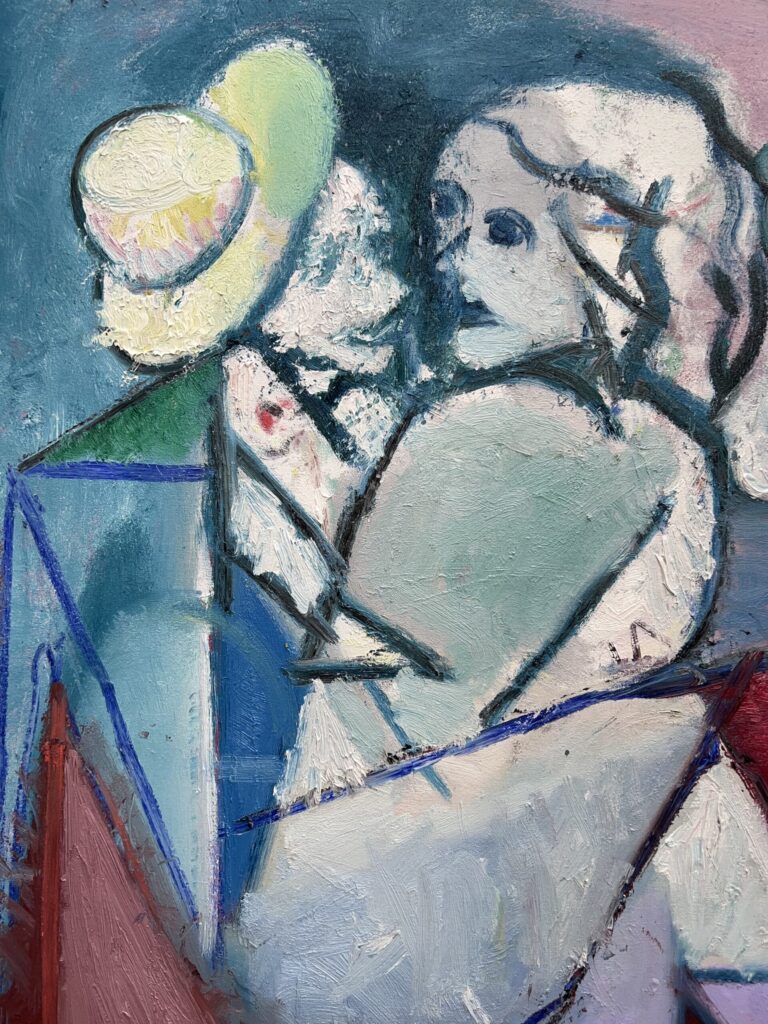

SB Knowing about your graffiti background, I was wondering how much interest, or access, you had to, let’s call it, ‘the fine art world’—the galleries, and maybe even fine art education?
RL I was aware of it, but not overly. I was hanging out with criminals and people that didn’t really care about fine art—that was basically all of the ’90s. Then I moved states from Queensland to Melbourne. That’s when I started looking for something else, I needed something more. I started to look for places to show my work. My first big gallery show was in 2000.
SB How would your first show compare to what you’re doing now?
RL Well, I guess it’s quite different. There were some spray-painted surfaces, paint and markers on wood, metal signs, tiles, and doors that I had acquired. I was influenced a lot by people like Barry McGee and Phil Frost. Those guys were doing amazing things. I’ve always tried to push and push and just keep trying to go forward. Rust never sleeps.
SB Your practice feels very focused on the materiality of the paint itself and the exploration of that. It feels like that’s primary, and the image is almost secondary.
RL The image is important because it’s going to evoke some kind of feeling. But I think you could almost have any image and the colours and the way it’s painted is going to override it. The image is there to be a support for the colour and textures and to pull it all together… a common thread. Like, I’ve done a series of works for Dio Horia [Gallery] in Athens for the show in April, and all of the paintings are tied together with the apple. I thought I was over the apple after I did that show in Berlin last year, but I haven’t let go of it yet.
SB Does it carry some symbolism for you?
RL Maybe. It has some connotations that I think about: Adam and Eve’s forbidden fruit that grew on the tree of knowledge, “an apple a day keeps the doctor away,” “the apple doesn’t fall far from the tree,” Newton’s concept of gravity… It’s a symbol of hope, prosperity, and immortality. It’s an object that has been used throughout art history. But also, it’s just a beautiful shape and colour.
SB Since I’ve been following your work, I’ve been quite impressed with the variety of ways you’re painting and the things you’re focusing on. Do these periods depend on anything in particular?
RL I think the different painting techniques come with the way I’m feeling. Sometimes I want to be quiet and methodic or cathartic. Other times it’s brutal and more physical. It’s refreshing for me to change techniques and my approach. It keeps me excited and interested.
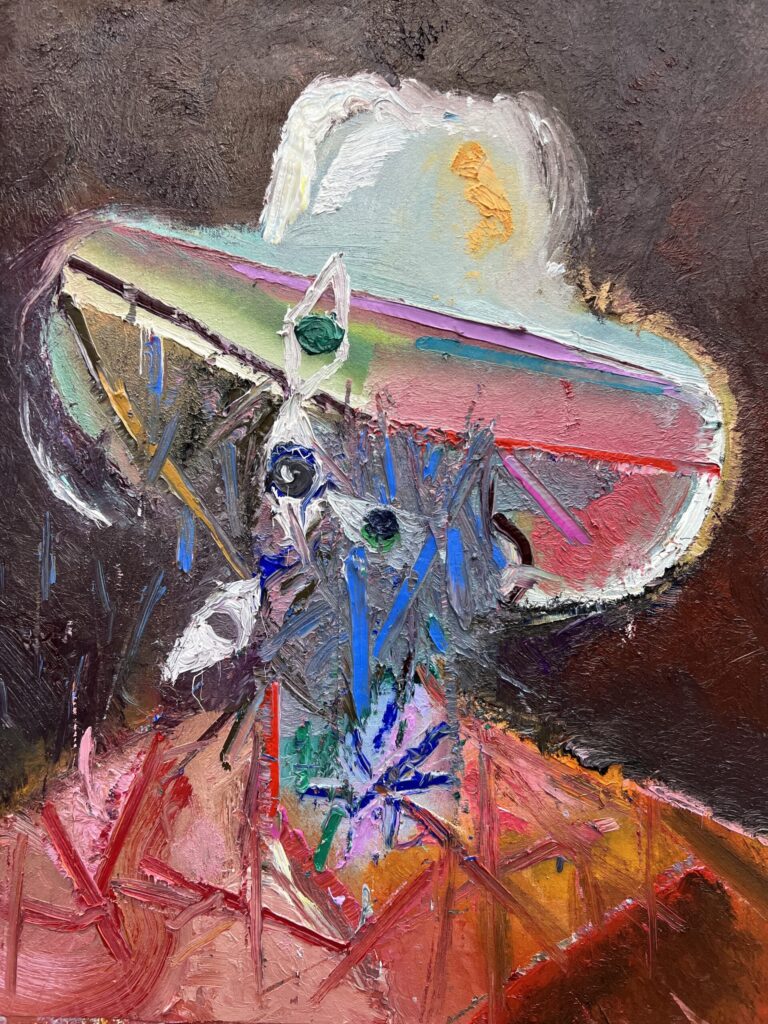
SB So, when did you get into oils and how did that go?
RL I think it was in 2009 that I started using oils. I made these three bronze heads that were menacing and dark. I think that was the turning point, I started getting into oils and I haven’t stopped. I found oils challenging to use. I think the most common issue when people start using oils is that things get really muddy. So, I just wanted to get better at painting with oil paint. I’m happy with the way I handle the paint now.
SB So, you took it as a challenge when you first got into it? It wasn’t like, “Fuck this, I’m not doing this”?
RL Yeah, sure. It was difficult and frustrating. But I just went with it. It was like, “Fuck it, I haven’t got a handle on it, but I’m still going to do it.” And it probably looks like I haven’t got a handle on it, but the imagery is okay and the paintings are okay. I just kept using oils until I worked it out.
SB I feel like that’s the case with a lot of painters. It’s like a never-ending quest...
RL Yeah, in a way you’re a slave to it. I think you need an ego to be an artist, you need an ego to paint. It’s a very self-indulgent kind of pursuit. But in the end, I think that the paint is the master. So you need this ego to stand in front of it and to stand with it. That might sound a bit ridiculous, but I know that the paint knows that I’m a fraud the whole time. It’s a strange relationship, kind of a slippery slope.
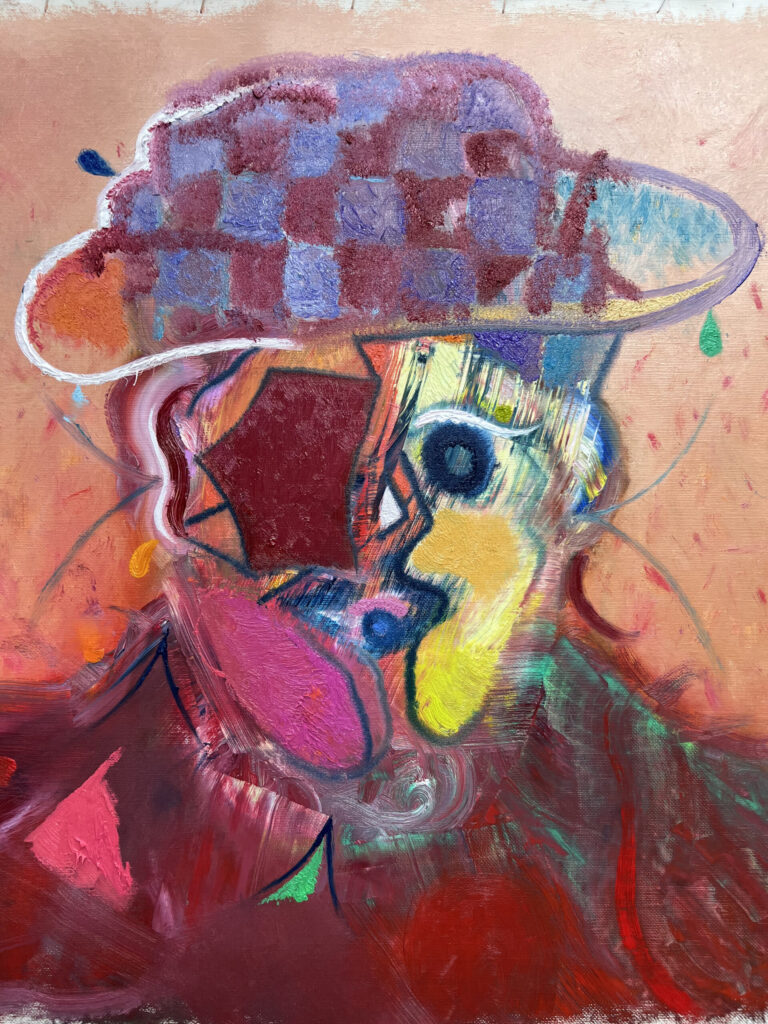
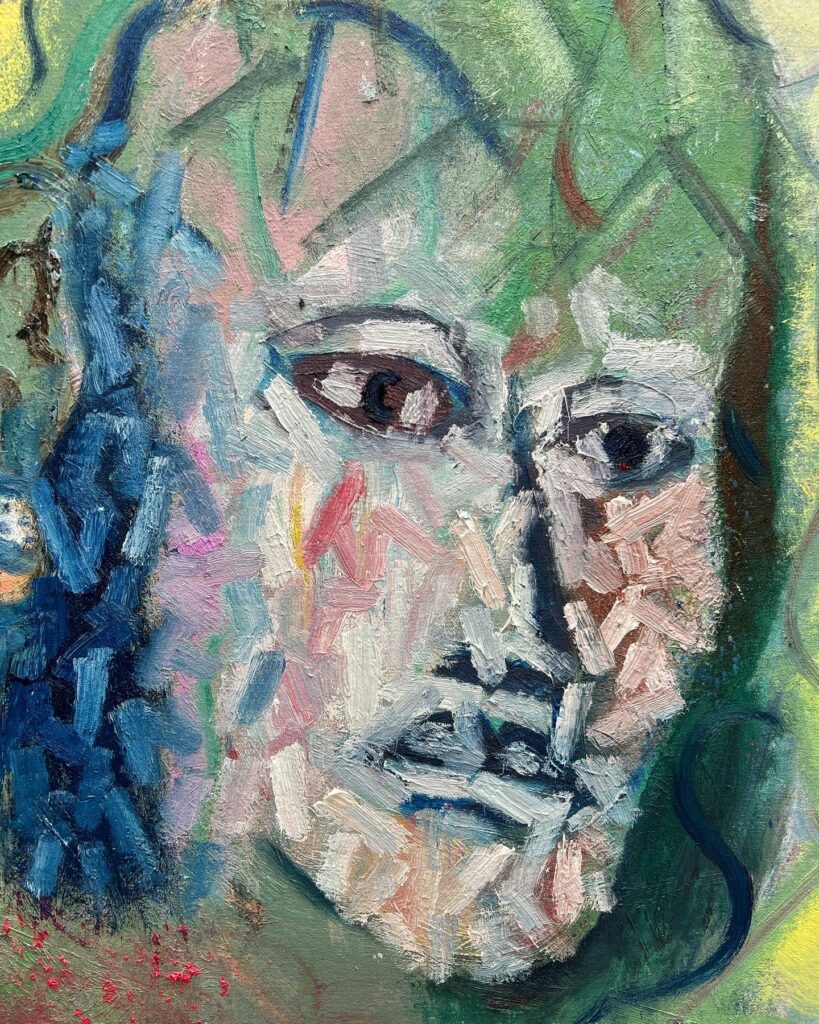
SB What are some of the things that excite you in your process, moments that stand out for you?
RL Filling an area on the canvas with a particular colour, and then filling another area, another shape next to it with another colour, and when those two colours really sing together and have some good textures. The way the paint is applied excites me. I don’t really look after my brushes very well, so they give me more of the marks that I’m interested in.
SB I also always enjoy the variety of images you’re working with, and not sticking to one theme or idea...RL I don’t know if that works in my favour or not, but I don’t really have a choice in that. A couple of years ago, I made a really conscious effort to try and slow everything down and be really patient and plan everything out. Now I usually make maybe thirty drawings to work from to produce a painting. And I sometimes find it challenging to be disciplined and have patience because I’m not a very patient person. I just want to start painting and get in there. The physical act of painting is very important to me. That’s where I really revel and I’m at my happiest, the actual act of painting. I get bored with preparation and it’s all a bit of a chore.
SB Does it ever happen that you feel, or you realise, that you’ve been too influenced by something?
RL Definitely! And I don’t like it when it happens. I feel sometimes it happens unintentionally, so I usually try not to show those works. Or I’ll change it, paint over it, or try and push it in another direction. It’s a difficult one and the most important thing you can do is be honest with yourself. Because if you’re honest with yourself, then everything works out.
You don’t have to ask questions and you don’t have to second guess yourself; it becomes automatic.
SB I guess experience and age helps with that...
RL Yeah, I’m forty-seven now and I’ve let some paintings slip through the cracks. But when you make something, you recognise that you’ve made it in a particular way. And whoever’s viewing it may or may not see that, but that’s okay. I’ll let that go because I feel okay about having those similarities with other artists or using some recognisable iconography. We’ve all seen that eye before or that nose before or whatever it is, but I’m okay with that. I have done plenty of paintings where I’ve looked at Picasso’s colour combinations. But you can’t really tell unless you see the paintings together. So sometimes I’m sneaky and sometimes I do it in a more obvious way. Having good intentions and being honest with yourself is the key.
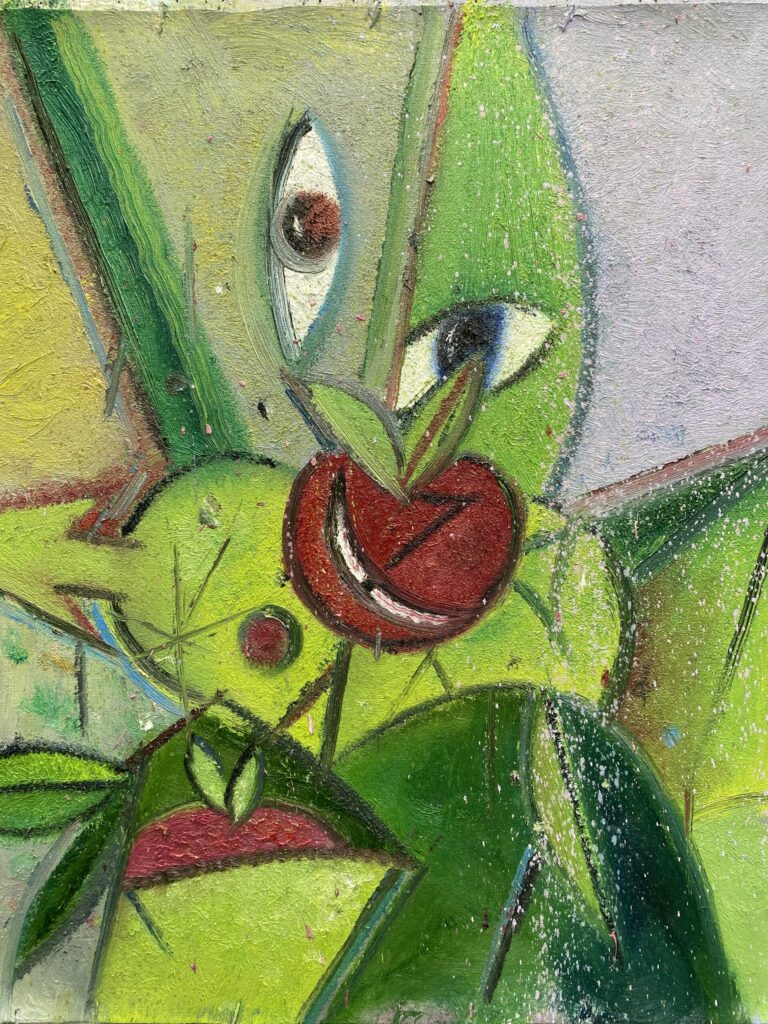
SB You’re sharing a lot of other people’s work on your Instagram and I found a couple of artists through you. Do you find it inspiring to look at other work or does it get frustrating?
RL Of course, it goes both ways. I guess the frustrating element is feeling isolated and not being able to go to certain events and meet certain people and go to certain studios because of my location. I find that bit frustrating. I try and ease the frustration by supporting people and letting them know that I’ve got their back. I post artists’ work that I love and genuinely want to get behind. I also think it’s nice to keep social media a positive place. It’s good to show love.
SB Yeah, I’m with you on that. And speaking of support, your partner is an artist too. How does that dynamic work, mixing family and professional stuff?
RL I’m definitely the bigger ego. It’s also interesting how you can sometimes get caught up in self-importance. I give Pia advice, both warranted and unwarranted, and I’m brutally honest when we discuss our work.
SB Oh, that sounds familiar! I have a similar dynamic at home with my wife being an artist [laughs].
RL Right? I don’t like to sugarcoat anything because everyone else will. I see myself as the voice of reason [laughslaughs], maybe the
most honest opinion you’re going to get. When you do something for a long time and you’re very passionate about it, you live and breathe it, you feel like you have valid things to say about it.
SB Does that also apply the other way around?
RL Every now and then Pia gives me advice about a painting and I’ll take it on, I’ll think about it, and often it’s an important contribution. It can be difficult to give honest opinions because you can sound like a complete asshole. I’m definitely guilty of that.
SB Can you tell us about your plans for this year?
RL I have a show at Dio Horia in Athens and I’m doing a residency with them in Mykonos for a month. I’m taking the family with me, so that’ll be nice and the kids are so excited. I’ve been talking to Omni Gallery in London and, since I’ve wanted to do a show in London for a long time, I’ll be showing with them in July. Then I’m doing a show here with Nicholas Thompson Gallery in September and I’ll finish the year with a show at Alice Gallery in Brussels. It will be great to do some travelling during the year.
[EXEUNT]
nicholasthompsongallery.com.au
nandahobbs.com
@rhyslee
Nabilah Nordin
By Sophie Prince
Nan Goldin's The ballad of sexual dependency
By Jasmine Penman
Atong Atem – A Familiar Face on a New Horizon
By Sophie Prince
GARETH MCCONNELL on MASKS, TRANSFORMATION and COMMUNICATION
By Annabel Blue
GAETANO PESCE IS MOULDING OUR MINDS
By Octavius La Rosa & Annabel Blue
Love Is What You Make It: ‘Love Letters’ by Jordan Drysdale
By Annabel Blue